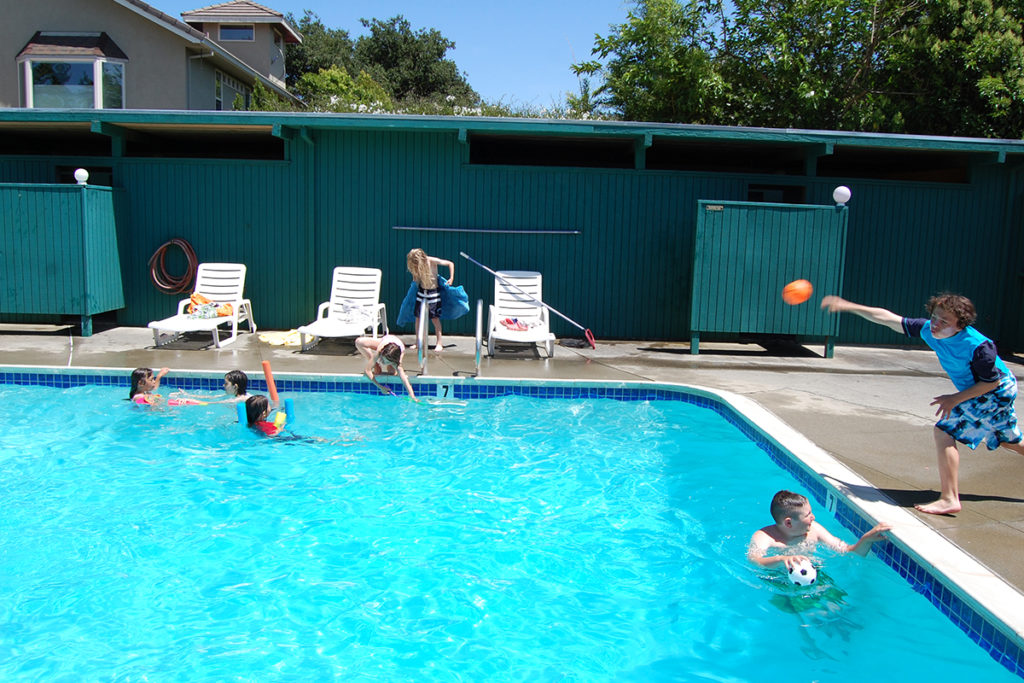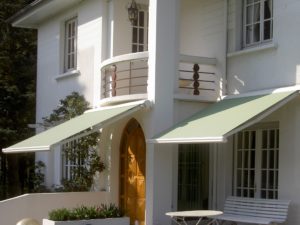
While extreme heat isn’t normal for the Bay Area, you don’t want to be caught off guard when a heat wave hits. Photo: The Pool Doctor ©2022
One of the major perks of living in the Bay Area is its mild year-round climate. However, despite the typically moderate conditions, Bay Area residents are not wholly unfamiliar with extreme weather. Take the heat wave that hit during Labor Day weekend in 2017, which left San Francisco smoldering at a historic high of 106 degrees Fahrenheit. Likewise, the summer of 2019 brought the heat, with triple-digit temperatures recorded in several Bay Area cities during June 11-12.
While such instances of extreme heat are far from the norm, their sporadic nature makes it all the more important to be prepared for them. After all, if you aren’t accustomed to living in hot weather, you’re less likely to be ready when it hits. That’s why we’ve provided the following tips on weathering a Bay Area heat wave:
Be in the know. The first step in preparing for a heat wave is to know when one is coming. Make a routine of checking local weather forecasts, noting not just the temperature but the heat index, which quantifies the combined effects of heat and humidity as perceived by the human body. Keep in mind that due to the urban heat island effect, those living in metropolitan areas may experience higher temperatures (and thus feel their effects more acutely) than residents of rural regions.

Awnings help to reduce a home’s interior temperature by shading sun-facing walls and windows. Photo: Wesco Screen Company Inc. ©2022
Keep your home cool. On hot days, proactive measures can go a long way toward minimizing in-home temperatures. One of the simplest steps is to open your windows during cooler times of day and close them when the outside temperature reaches an uncomfortable level. For windows that receive direct sunlight, make sure the shades or curtains are drawn to minimize solar heat gain. Avoid using appliances and fixtures that generate heat, such as ranges, dishwashers and incandescent lighting.
If your home has air conditioning, use it to your advantage. To minimize energy costs, maintain a consistent indoor climate throughout the day, even if you plan to be out for parts of it. Turning your system on and off throughout the day actually consumes more energy because the system has to work harder to resume the desired temperature.
If you don’t have air conditioning, you’ll need to take additional measures to stay cool. Take a cold shower, mist yourself with a chilled spray bottle (target “pulse points” like the wrists and back of the neck) or create your own DIY air conditioner. Simply place an ice-filled pan or bowl in front of a fan—as the ice melts, the breeze from the fan will pick up the cool air it generates and send it your way.
Attend to the needs of others. Children and elderly individuals run a higher risk of succumbing to heat stroke/exhaustion. If you have children, make sure they stay hydrated and keep them out of the sun. If your home isn’t air-conditioned, consider taking a family outing to the local library, mall, movie theater or swimming pool.
The elderly are particularly vulnerable to the effects of hot weather. During the Bay Area heat wave of September 2017, there were at least three confirmed senior citizen deaths caused by shock due to heat stroke. Be sure to check in on your elderly friends, relatives and neighbors, and confirm they’re equipped to stay cool.
In addition to caring for the humans in your life, you’ll need to address the needs of any non-human lifeforms that depend on you. If you have pets, make sure they have plenty of water and access to shade. If you have a garden, you may want to give a little extra water to your plants and trees, and take extra measures to protect heat-sensitive plants, such as covering them or bringing them into the house.
Eat smart. Believe it or not, your eating habits can impact your comfort and well-being during a heat wave. Rather than eating large meals, it’s better to eat several small meals throughout the day. Since large meals take longer to digest, they create more metabolic heat, which in turn increases body temperature. You should also avoid alcoholic and caffeinated beverages, as both are diuretics that promote dehydration; instead, drink extra water. To get some refreshment, enjoy cool snacks and meals like chilled watermelon and a crisp, cold salad.
Care for your car. One commonly overlooked aspect of heat wave protocol is car care. If possible, park your car in the garage or in the shade to keep it out of direct sunlight. If you have to park your car in the sun, roll down your windows a little to prevent excess heat buildup inside, as this can increase the chances of windshield cracks and other issues.
If you plan on driving in the heat, be proactive to avoid consequent car problems. Make sure your tires are at the proper inflation—since they expand in hot weather, over-inflated tires are more susceptible to blowouts. Additionally, a car’s engine is more prone to overheating on hot days, particularly while driving for long distances or up steep inclines. If you’re doing a lot of uphill driving, consider turning off your air conditioner to reduce the chances of overheating.
